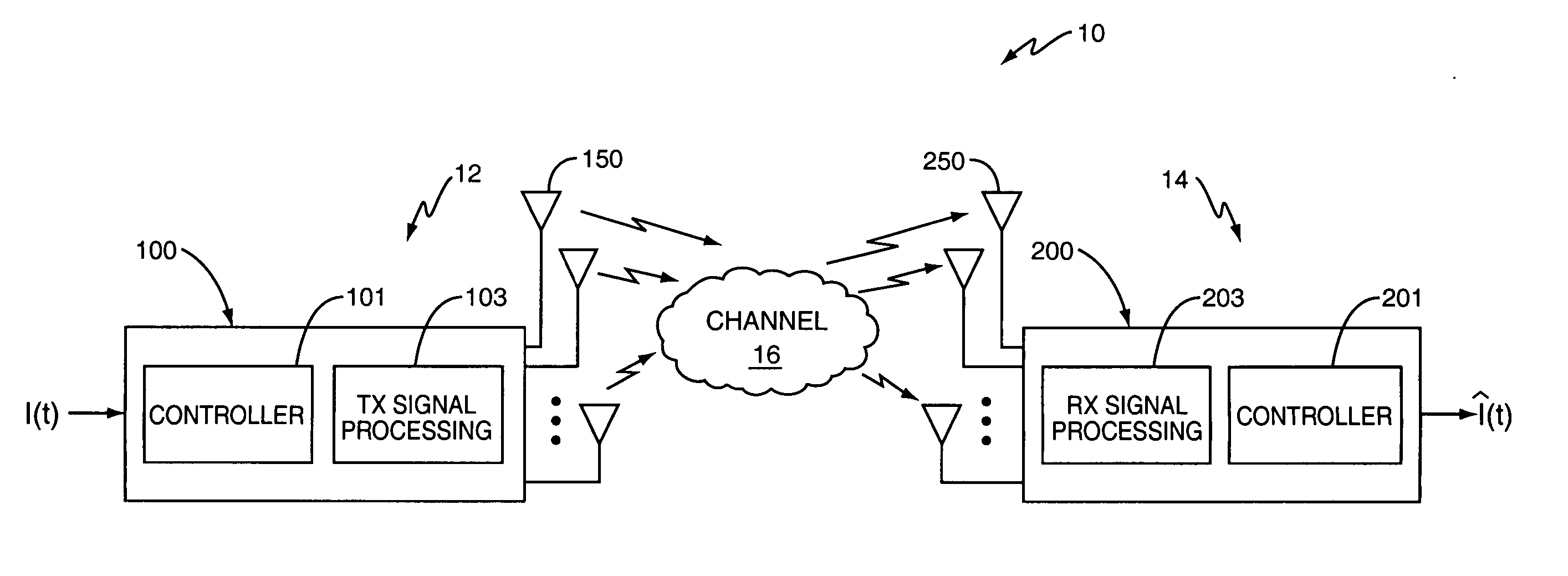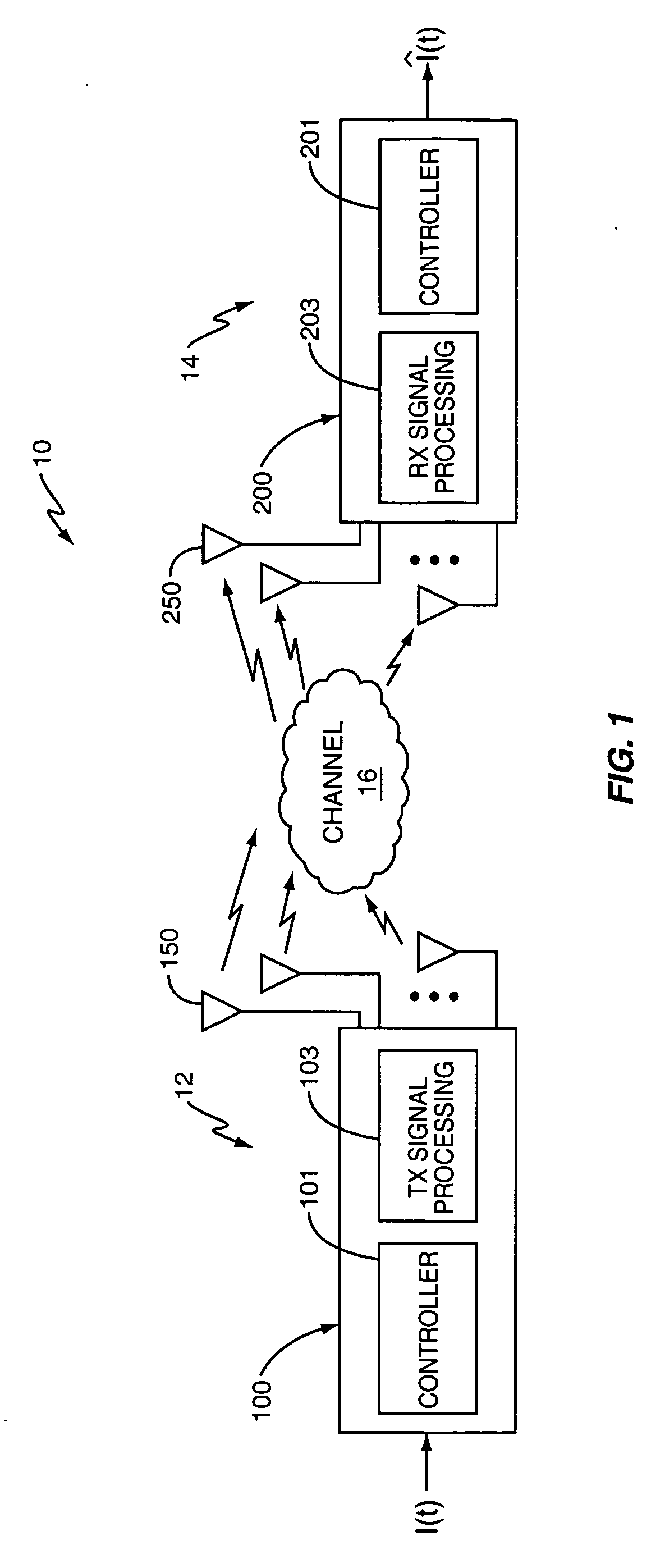Network-controlled feedback for MIMO systems
a network-controlled feedback and mimo technology, applied in diversity/multi-antenna systems, wireless communication, spatial transmit diversity, etc., can solve the problems of affecting the antenna selection, the number and mix of users may affect the antenna selection, and the one antenna configuration that is best for all possible operating conditions
- Summary
- Abstract
- Description
- Claims
- Application Information
AI Technical Summary
Benefits of technology
Problems solved by technology
Method used
Image
Examples
second embodiment
[0042]FIG. 6 illustrates an exemplary transmitter 300 based on a spatial multiplexing (SM) architecture. In this embodiment. the input data stream is coded before it is split and the separate bitstreams are then independently modulated and transmitted. The transmitter 300 comprises an encoder 302 to encode the original information stream I(t) to generate a coded bitstream, a demultiplexer 304 to divide the coded bitstream into M bitstreams {b1(t), b2(t), . . . bM(t)}, modulation circuits 306 for each bitstream, and a plurality of transmit antennas 320. The modulation circuit 306 for each bitstream comprises a demultiplexer 308 to divide each coded bitstream into a number of substreams, a plurality of symbol mappers 310 to map each substream to a point on a signaling constellation, a plurality of signal spreaders 312 to apply a selected spreading code to each substream, and a combiner 314 to recombine the substreams to generate a transmit signal {x1(t), x2(t), . . . xM(t)} for trans...
third embodiment
[0043]FIG. 7 illustrates an exemplary transmitter 400 based on a matched field transmit diversity (MFTD) architecture. The input data stream is transmitted from multiple transmit antennas 420 to receiver 200 with one or more receive antennas 250. The input stream is pre-filtered to match the channel between the transmit and receive antennas 420, 250. In this architecture, each stream is transmitted from all transmit antennas 420. The transmission mode corresponds to the number of streams or transmit signals. The pre-filter 412 is used to focus each transmit signal on a selected receive antenna 250.
[0044] The transmitter 400 includes a demultiplexer 402 to divide the information bitstream into a plurality of bitstreams, a coding and modulation circuit 404 for each bitstream, a prefilter 412 matched to the communication channel between the transmitter 400 and the receiver 200, and a plurality of transmit antennas 420. Each coding and modulation circuit 404 includes an encoder 406 to ...
PUM
 Login to View More
Login to View More Abstract
Description
Claims
Application Information
 Login to View More
Login to View More - R&D
- Intellectual Property
- Life Sciences
- Materials
- Tech Scout
- Unparalleled Data Quality
- Higher Quality Content
- 60% Fewer Hallucinations
Browse by: Latest US Patents, China's latest patents, Technical Efficacy Thesaurus, Application Domain, Technology Topic, Popular Technical Reports.
© 2025 PatSnap. All rights reserved.Legal|Privacy policy|Modern Slavery Act Transparency Statement|Sitemap|About US| Contact US: help@patsnap.com



